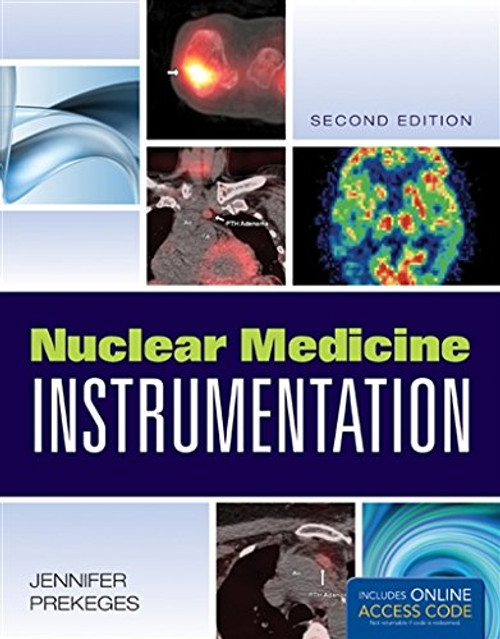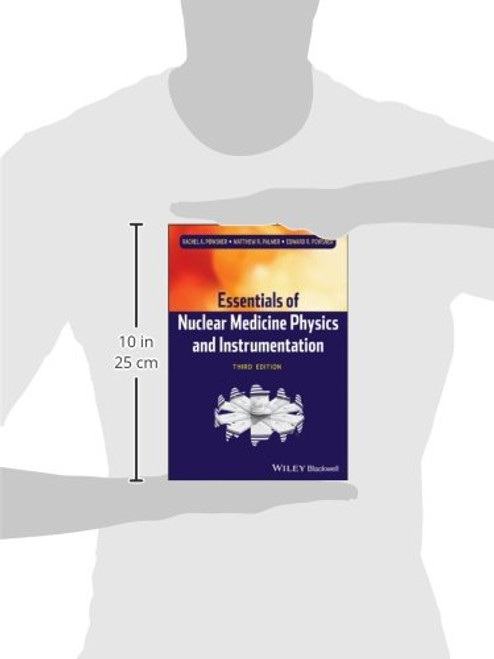Product Overview
A comprehensive guide to the practical aspects of nuclear medicine instruments, Nuclear Medicine Instrumentation, Second Edition prepares students to become skilled technologists. This informative reference covers nuclear medicine instruments from simple radiation detectors to complex positron emission tomography (PET) scanners, focusing on the operation of the most commonly used instruments and issues that arise in their use.
Designed to enable students to perform high-quality imaging, Nuclear Medicine Instrumentation, Second Edition emphasizes quality control, explaining how instruments can fail and how to improve the images obtained. The text includes more than 400 photographs, tables and illustrations, as well as sample calculations.
Features
Provides sample calculations, highlighting quality control tests, dose calibrators, scintillation detectors, efficiency factor determination, and more
Contains Tables for reference in troubleshooting small instruments and improving planar and SPECT images
Covers new imaging instruments that are quite different in how they operate. Provides a brief overview of each, at a level that makes them intelligible to the average student technologist
Includes excellent coverage of Effect of Acquisition Parameters for gamma cameras and SPECT
The Second Edition includes revised content and updated data throughout as well as a new chapter on Magnetic Resonance Imaging and Its Application to Nuclear Medicine and a new Appendix on Laboratory Accreditation.
What's New in the Second Edition
Content and Data updated and revised throughout.
New: Chapter 19 Magnetic Resonance Imaging and Its Application to Nuclear Medicine.
Chapter 2 - includes a new concept map elucidating the operation of a scintillation detector, a better description of calibration, and clarification of energy resolution (the property being measured) vs. FWHM ( the mechanism by which it is measured).
Chapter 5 - the section on non-Anger cameras was rewritten to address planar devices only, with descriptions of non-Anger SPECT systems in Chapter 12.
Chapter 8 - the sections on background and noise have been rewritten.
Chapter 10 - the description of SPECT axes was changed to match that used for other types of tomographic imaging systems.
Chapter 12 - this chapter was updated to include recent improvements, a section on noise regularization, and more information on implementation and clinical benefits. Both software methods of incorporating improvements and non-Anger 3D imaging systems are discussed.
Chapter 15 - photos of a PET tomograph taken apart are included, so that the reader can see crystals, septa, electronics, and a rod source. The description of direct and cross-planes is expanded. There is decreased emphasis on 2D vs. 3D imaging, and new sections on dynamic and gated imaging and organ-specific PET systems are included.
Chapter 16 - the section on the SUV is rewritten to reflect its increasing importance, and a new section on the benefits of time-of-flight PET is included.
Chapter 19 - this is a completely new chapter on MRI, written as the first PET/MRI scanners are coming into clinical use. It aims to provide a modest rather than in-depth level of understanding of MRI as well as the technological challenges and clinical benefits of combining MRI with PET imaging.
Appendix A - extensively rewritten to emphasize the consequences of radiation interactions.
NEW: Appendix F - a new appendix on laboratory accreditation; references to the requirements of accrediting agencies are also sprinkled throughout the text as appropriate.
Instructor Resources: Image Bank, PowerPoint Presentations, and a Test Bank
Student Resources: A Companion Website,including: Crossword Puzzles, Interactive Flashcards, Interactive Glossary, Matching Exercises, Web Links
Each new textbook includes an access code for the Companion Website. Please note: Electronic formats/ebooks do not include access to the companion website.






